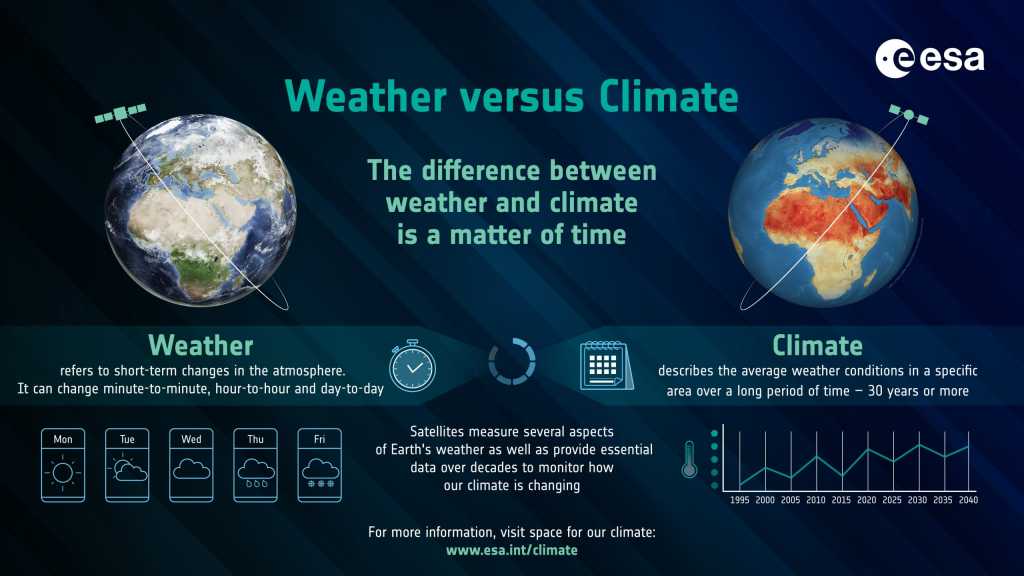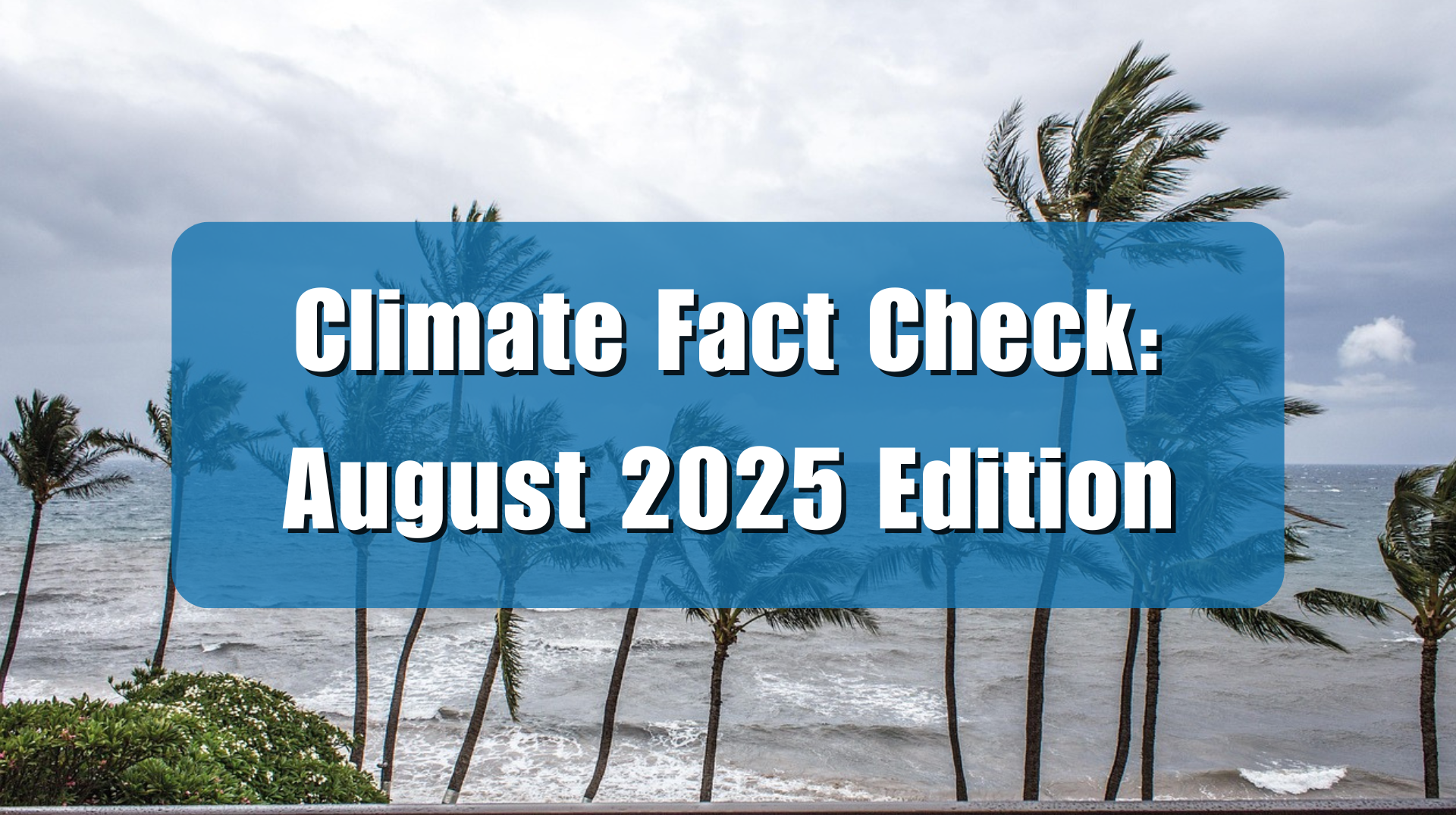One of the most common mistakes made when discussing climate change is claiming that specific weather events are proof of climate change. A recent example is the erroneous claim that Hurricane Ian was made stronger by climate change. The media will often refer to weather and climate interchangeably, even though the two meteorological terms have distinct meanings. Weather is a short time frame phenomenon or event – minutes to days – while climate is a long-term, minimum 30 year, trend.
Weather can be highly variable on an hourly, daily, weekly, or even yearly basis – one day it might be sunny with afternoon thunderstorms and the next it’s cold and snowing. Climate is the observed weather averaged over 30 years for a specific area or region. A 30 year average cannot, “drive” daily weather events. There is no physical mechanism for a statistical average to impact daily weather. The weather for a particular day, by contrast, can be either representative of or unrepresentative of a particular region’s climate for a specific season. Hurricane Ian was representative of the type of weather event that commonly arises in the North Atlantic during hurricane season, and not outside the norm.
The new Climate at a Glance (CAAG) reference page, Weather vs. Climate, clarifies the issue using fully referenced sources from the National Oceanic and Atmospheric Administration, The World Meteorological Organization, The United Nations Intergovernmental Panel on Climate Change (IPCC), and the European Space Agency (ESA).
For example, this infographic prepared by the ESA shows the difference in time frames for weather and climate.
The new CAAG page also includes a summary from the IPCC’s AR6 report, Chapter 11, Weather and Climate Extreme Events in a Changing Climate, clearly illustrating the fact that the IPCC has not detected a “climate signal” for nine specific types of weather events including: flooding, drought, hurricanes/tropical cyclones, tornadoes, thunderstorms, hail, lightning, and extreme winds.
The new CAAG reference page can be used by anyone who wishes to correct news stories or social media posts where erroneous claims of a climate linkage to weather events is made. It also includes a printable, easy-to-read summary page in PDF format.
For referenced discussions of additional climate related topics that the corporate media commonly makes errors about when discussing, interested parties can access Climate at a Glance for Teachers and Students: Facts on 30 Prominent Climate Topics, on Amazon, or download if for free here.
The media often conflates weather and climate due to a combination of limited understanding of science and an apparent dedication to promoting an erroneous belief that dangerous climate change is visible in everyday life. The Weather vs. Climate page corrects this all too common mistake.















![Weather_versus_climate_at_a_glance-scaled[1]](https://climaterealism.com/wp-content/uploads/2022/10/Weather_versus_climate_at_a_glance-scaled1-696x392.jpg)









